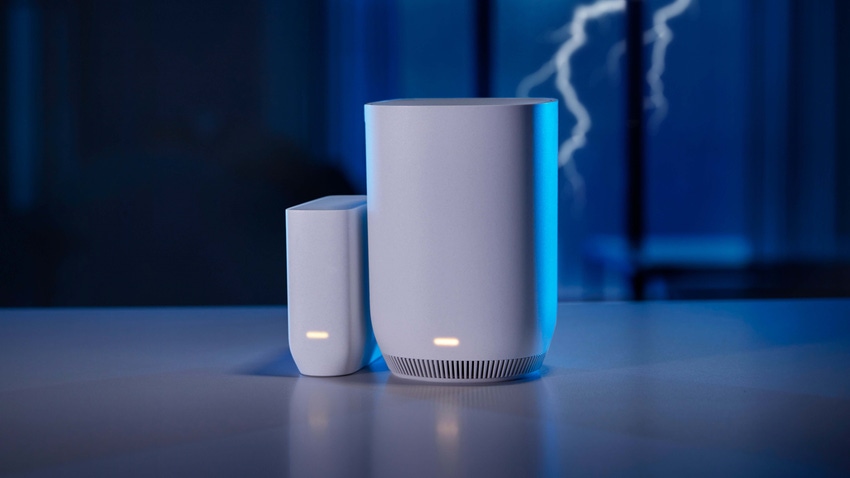Comcast's 'Storm-Ready WiFi' taps Verizon's cellular network for backup
'Storm-Ready WiFi,' a premium product from Comcast that residential subs can buy for $7 per month over 36 months, surfaces as network reliability and ARPU become more important to the cable op's broadband story.

Borrowing a page from its business services menu, Comcast has launched Storm-Ready WiFi, a new residential offering that uses the Verizon cellular network as its backup Internet connection.
The new offering, designed to keep customers connected if the primary cable network goes down due to a storm or downed trees, has built-in support for Wi-Fi 6 and doubles as a Wi-Fi extender that's compatible with the operator's XB7 or XB8 DOCSIS 3.1 gateways. When power goes out, the customer's network is automatically transitioned to the cellular backup network, with speeds limited by the availability of the area's LTE service. According to the offering's fine print, the backup LTE network, when activated, provides speeds of up to 30 Mbit/s downstream and 7 Mbit/s upstream.
Comcast, which also offers a similar product for small and midsized business customers that provides up to 16 hours of backup connectivity, is launching the product at a time when reliable access to broadband – and to in-home Wi-Fi, in particular – is becoming increasingly important. Reliability is one pillar of cable's "10G" initiative that is also focused on symmetrical multi-gig speeds and low latency over hybrid fiber/coax (HFC), fiber-to-the-premises (FTTP) and wireless last-mile networks.
Comcast confirmed that its new Storm-Ready WiFi device uses the Verizon LTE network as the backup. Xfinity Mobile, a service that serves about 6 million mobile lines, also uses the Verizon mobile network. Storm-Ready WiFi also features a four-hour rechargeable battery. Comcast noted that the device is the first from the company to be designed using recycled materials, with 65% of the casing made from post-consumer recycled plastic.
Potential ARPU-driver
The operator is selling Storm-Ready WiFi as a premium – customers can buy the product for $7 per month over 36 months or outright for $252. One caveat is that broadband customers must get home broadband speeds of 800 Mbit/s or more (downstream) to be eligible for Storm-Ready WiFi. The new product currently is not available to Comcast residential customers who subscribe to Gigabit Pro, the operator's targeted EPON-based fiber-to-the-premises product.
Comcast's new premium product is also emerging as the operator continues to put more emphasis on average revenue per unit (ARPU) for broadband, rather than sheer subscriber growth, as the key metric for that part of the business.
"Not only does Storm-Ready WiFi extend coverage to deliver our best-in-class WiFi to hard-to-reach corners of the home, but it also gives customers the peace of mind that their connection at home can continue even when the power is out," Emily Waldorf, SVP of consumer Internet services at Comcast Cable, said in a statement.
Update: CableLabs' Kyrio unit also focused on backup connectivity
Comcast isn't alone in focusing on this area. Kyrio, the for-profit unit of CableLabs, is approaching home broadband backup connectivity with a product called ARC Hotspot. ARC Hotspot centers on a piece of software deployed in home routers that enables devices connected to a home's Wi-Fi network to automatically shift to the cellular connection of an authorized smartphone when an outage is detected.
Kyrio is currently in the certification stage with device partners, and is collaborating with a "major" OEM (original equipment manufacturer) on an ARC Hotspot implementation, said Chetan Hebbalae, who recently joined Kyrio as VP of software products and network technology. Additionally, a tier 1 operator in the Latin America region is set to deploy the ARC Hotspot solution shortly, Hebbalae added.
Related posts:
— Jeff Baumgartner, Senior Editor, Light Reading
About the Author(s)
You May Also Like












